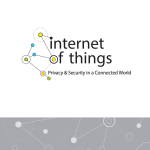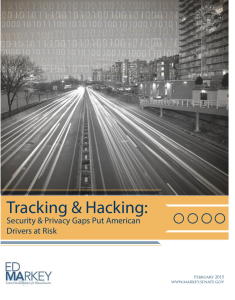What happens with sensor design, cost, and security remains front-and-center with the Internet of Things, no matter how much we focus on advanced analytical tools and the growing power of mobile devices.
That’s because, on one hand, truly realizing the IoT’s full potential will require that at least some sensors get to the low-power, tiny size and cheap costs needed to realize Kris Pister’s dream of “smart dust” sensors that can be strewn widely.
On the other hand, there’s the chance that low-end sensors that don’t include adequate security firmware can’t keep up with the changing nature of security risks and may give hackers access to the entire network, with potentially disastrous effects.
That’s why several reports on sensors caught my eye.
PWC released a report, Sensing the Future of the Internet of Things, zeroing in on sensor sales as a proxy for increased corporate investment in the IoT, and concluding that by that measure, “the IoT movement is underway.” Based on its 2014 survey of 1,500 business and technology leaders worldwide, there was one eye-popping finding: the US lags behind the entire rest of the world in planned spending on sensors this year: 26% of Asian and almost as many from South America (percentage not given) followed closely by Africa, with 18%. The surprising laggards? Europe with 8% and North America, dead last at only 7%. Hello?????
Equally interesting was the company’s listing of the industry segments leading the deployment of sensors and examples of the sensors they’re using:
- Energy & Mining: 33%. “Sensors continuously monitor and detect dangerous carbon monoxide levels in mines to improve workplace safety.”
- Power and Utilities: 32%. Instead of the old one-way metering, “Internet-connected smart meters measure power usage every 15 minutes and provide feedback to the power consumer, sometimes automatically adjusting the system’s parameters.”
- Automotive: 31%. “Sensors and beacons embedded in the road working together with car-based sensors are used for hands-free driving, traffic pattern optimization and accident avoidance.”
- Industrial: 25%. “A manufacturing plant distributes plant monitoring and optimization tasks across several remote, interconnected control points. Specialists once needed to maintain, service and optimize distributed plant operations are no longer required to be physically present at the plant location, providing economies of scale.”
- Hospitality: 22%. “Electronic doorbells silently scan hotel rooms with infrared sensors to detect body heat, so the staff can clean when guests have left the room.”
- Health Care: 20%. “EKG sensors work together with patients’ smartphones to monitor and transmit patient physical environment and vital signs to a central cloud-based system.”
- Retail: 20%. “Product and shelf sensors collect data throughout the entire supply chain—from dock to shelf. Predictive analytics applications process this data and optimize the supply chain.”
- Entertainment: 18%. “In the gaming world, companies use tracking sensors to transfer the movements of users onto the screen and into the action.”
- Technology: 17%. “Hardware manufacturers continue to innovate by embedding sensors to measure performance and predict maintenance needs before they happen.”
- Financial Services: 13%. “Telematics allows devices installed in the car to transmit data to drivers and insurers. Applications like stolen vehicle recovery, automatic crash notification, and vehicle data recording can minimize both direct and indirect costs while providing effective risk management.”
The surprises there were that health care penetration was so low, especially because m-health can be so helpful in diagnosis and treatment, while the examples of telematics seemed off the mark in the financial services category. Why not examples such as ApplePay?
More compelling were the relatively high rates of sensor deployment in high-stakes fields such as energy, utilities, and automotive: those are such huge industries, and the benefits of real-time data are so compelling that they show the IoT is really maturing.
Finally, the percentage of companies investing in sensors grew slightly, from 17% to 20%, with 25%of what PWC labels “Top Performers” are investing in them compared to 18% the previous year. Surprisingly, most companies don’t get it about sensors’ importance: only “14% of respondents said sensors would be of the highest strategic importance to their organizations in the next 3–5 years, as compared to other emerging technologies.”
Most important, 54% of those “Top Performers” said they’d invest in sensors this year.
Sensors’ promise as the size decreases — radically — and functionality increases was highlighted by The Guardian. It focused on PragmaticIC Printing, a British firm that prints tiny, hairlike sensors on plastics. CEO Scott White’s hope is that:
” the ultra-thin microcircuits will soon feature on wine bottles to tell when a Chablis is at the perfect temperature and on medication blister packs to alert a doctor if an elderly patient has not taken their pills.
“With something which is slimmer than a human hair and very flexible, you can embed that in objects in a way that is not apparent to the user until it is called upon to do something. But also the cost is dramatically lower than with conventional silicon so it allows it to be put in products and packaging that would never justify the cost of a piece of normal electronics,” said White.
These uses certainly meet my test of real innovation: what can you do that you couldn’t do before. Or, as White puts it, “It is the combination of those factors [price and size] which allows us to start thinking about doing things with this which wouldn’t even be conceivable with conventional silicon based electronics.”
Another article that really caught my eye regarded a new category of “hearable” — and perhaps even, more radically, “disappearables” –sensors which the headline boldly predicted “As Sensors Shrink, Wearables Will Dis-appear.” But they were barely here in the first place, LOL! The article mentioned significant breakthroughs in reducing sensors’ size and energy requirements, as well as harvesting ambient energy produced by sources such as bodily movement:
“Andrew Sheehy of Generator Research calculates that, for example, the heat in a human eyeball could power a 5 milliwatt transmitter – more than enough, he says, to power a connection from a smart contact lens to a smartphone or other controlling device.”
- biomimcry of “slit organs” on spiders’ legs: these pads are very sensitive to sound and vibration, and can potentially be used “in everything from sound recording and speech recognition to movement and sensing the earliest tremors before an earthquake. It could also be used as a wearable blood-pressure sensor and for other medical monitoring applications.” Astounding!
- a vibration-powered sensor to detect structural problems in buildings and bridges as well as natural systems: this one took me back, because the first article I ever did about the IoT, in 2004 (when it was usually referred to as “ubiquitous computing,” was about a pipeline sensor from Millennial Net that was powered by the pipeline’s vibrations.
- one to make baby-foods safer. This one would detect, very quickly, environmental bacteria that would create spores to enter the dairy supply chain at unsafe levels.
HOWEVER, as I said above, here’s what worries me. Are developers paying enough attention to security and privacy? That could be a real downfall for the IoT, since many sensors tend to be in place for years, and the nature of security challenges can change dramatically during that time. Reducing price can’t be at the expense of security.
Let me know what steps you’re taking to boost sensor security, and I’ll mention them in a future post!



